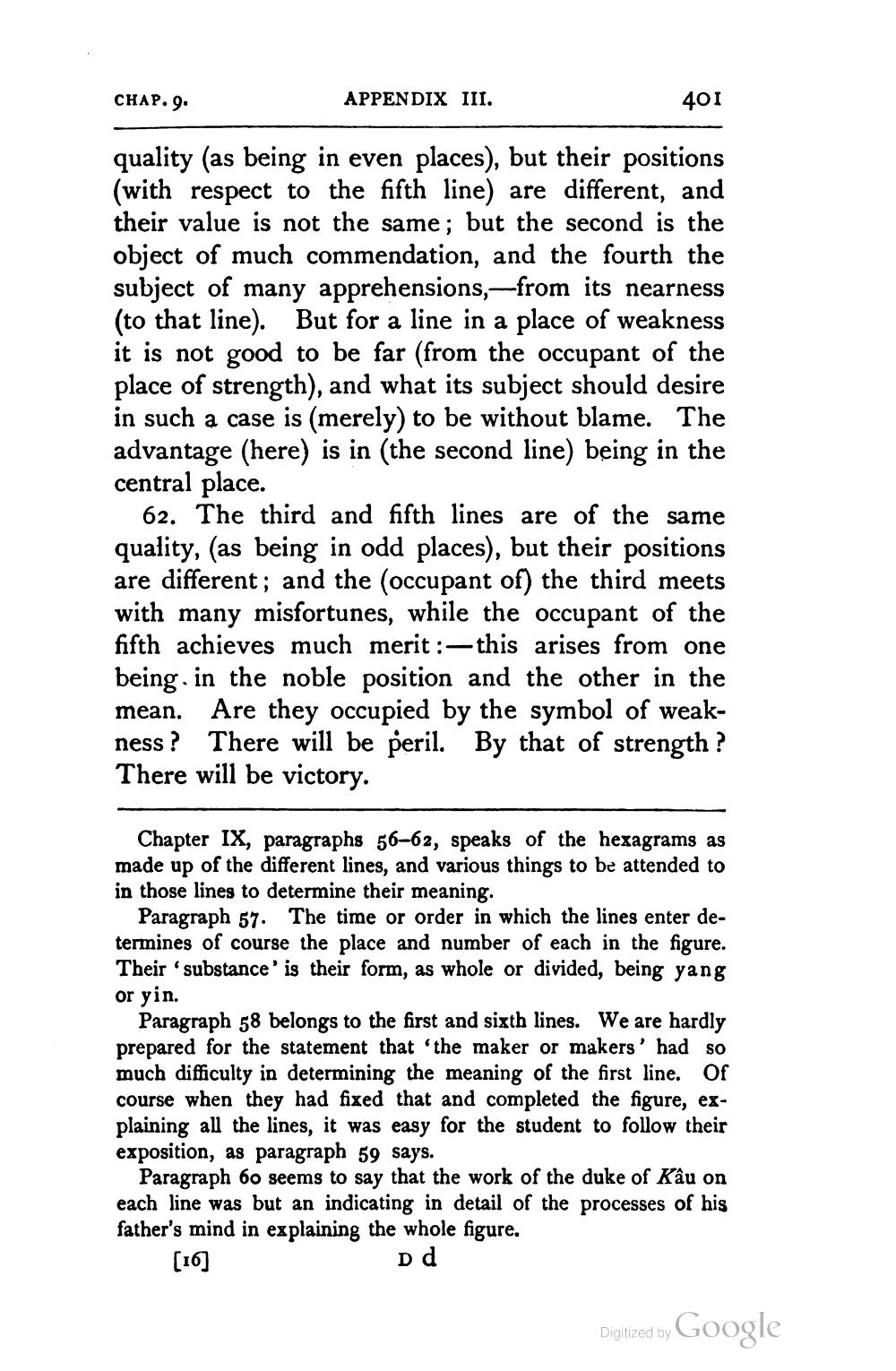________________
CHAP. 9.
APPENDIX III.
401
quality (as being in even places), but their positions (with respect to the fifth line) are different, and their value is not the same; but the second is the object of much commendation, and the fourth the subject of many apprehensions,—from its nearness (to that line). But for a line in a place of weakness it is not good to be far (from the occupant of the place of strength), and what its subject should desire in such a case is (merely) to be without blame. The advantage (here) is in (the second line) being in the central place.
62. The third and fifth lines are of the same quality, (as being in odd places), but their positions are different; and the (occupant of) the third meets with many misfortunes, while the occupant of the fifth achieves much merit:— this arises from one being in the noble position and the other in the mean. Are they occupied by the symbol of weakness? There will be peril. By that of strength ? There will be victory.
Chapter IX, paragraphs 56–62, speaks of the hexagrams as made up of the different lines, and various things to be attended to in those lines to determine their meaning.
Paragraph 57. The time or order in which the lines enter determines of course the place and number of each in the figure. Their 'substance' is their form, as whole or divided, being yang or yin.
Paragraph 58 belongs to the first and sixth lines. We are hardly prepared for the statement that the maker or makers' had so much difficulty in determining the meaning of the first line. Of course when they had fixed that and completed the figure, explaining all the lines, it was easy for the student to follow their exposition, as paragraph 59 says.
Paragraph 60 seems to say that the work of the duke of Kâu on each line was but an indicating in detail of the processes of his father's mind in explaining the whole figure.
od
[16]
Digitized by Google




